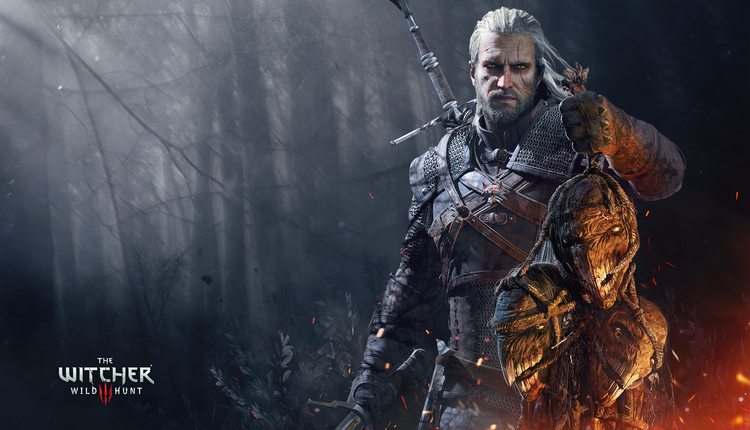The Witcher 3: Wild Hunt and Issues of Open-World Freedom
The job looked easy; a local security crew were over a day late returning from a simple job, escorting a merchant wagon. I was charged with finding the men, and dealing with whatever was holding them up. Simple Witcher’s work, nothing more.
As it turned out, the contract was far over my experience level, so I put it in my back pocket to deal with later on. Setting out with no particular direction, I explored the nearby area. Vast hillside dunes led me down to a mist covered island. The lure of easy treasure proved too good to be true; assaulted by foglets, I managed to cut the phase-shifting bastards down, barely escaping with my life and my haul.
Trekking around the sandy cliff, I stumbled into an unmarked cave where the security crew had found refuge. From them, I learnt that a Royal Wyvern had assaulted the wagon. Not good. Retreating, I sheepishly vowed to kill the beast, instead setting a direct course for the nearest tavern.
Should’ve known it wouldn’t be that easy.
Before leaving the area, a point of interest on the mini-map piqued my curiosity. Climbing to the top of the seaside cliff, I encountered a pair of wyverns, a dozen levels above me. Really not good.
[perfectpullquote align=”full” bordertop=”false” cite=”” link=”” color=”#70006C” class=”” size=”19"]”Just as I finished basking in the imagined adoration of the townsfolk, I heard a distinctive roar from behind me…”[/[/perfectpullquote]p>
Jumping on my horse, I ran, desperately hoping to get away from the dragon-like beasts. Charging blindly, I managed to lose one of them, but not before inadvertently leading one of them to the nearby village of Benek, bringing yet another catastrophe into the lives of these refugees. Praying for luck, I darted around the wyvern, gradually chipping down the health of the monster as farmers screamed in my ears. Finally, after five nerve-wracking minutes, the deed was done, the body of the beast lying before me like a mangled trophy.
Emboldened by my success, I climbed back up the mountain, cutting the survivor down in a matter of minutes. The sole survivor, or so I thought.
Just as I finished basking in the imagined adoration of the townsfolk, I heard a distinctive roar from behind me:
I had forgotten about the Royal Wyvern.
Wandering around The Witcher 3: Wild Hunt offers a seemingly never-ending series of diversions. From retrieving frying pans to playing hide and seek, slaying false deities to taming wild spirits, Geralt of Rivia’s adventure manages to combine an open world sense of exploration and freedom with an attention to quest and character detail normally reserved for smaller scale CRPGs, such as Baldur’s Gate or Pillars of Eternity. Every activity has a human touch behind its creation, with even the smallest fetch quests coming attached to vibrant NPCs, more often than not telling an engaging story to boot.
Did I mention Wild Hunt has its own card game, Gwent, with dedicated NPCs, questlines and Pokemon-style showdowns, all of which is entirely optional? It’s goddamn ridiculous.
By going the extra mile, CD Projekt Red created a paradox: a truly intimate open-world game that somehow maintains a staggeringly consistent level of scope and substance. The allure of the wild is intoxicating, wrapping the player up in the sights and sounds of a truly immersive world. However, this vastness comes at the price of focus. In theory, the engaging main story-line of The Witcher 3: Wild Hunt comes packaged in one of the most detailed game worlds in years. Win-win, right?
In practice, these two masterfully executed elements clash, with the game’s wealth of exploration opportunities working against the main narrative.
On the gameplay front, The Witcher 3: Wild Hunt seems to punish the player for being naturally inquisitive; focus too heavily on side quests and Geralt becomes monstrously over-leveled for main-story missions, making the combat sections of many set pieces feel like a chore rather than a challenge. Not to mention how this affects the narrative’s pacing; every side-quest undertaken undermines Geralt’s supposedly urgent desire to find his adopted daughter Ciri, with no amount of self-aware asides justifying Geralt’s willingness to abandon his primary goal at the drop of a hat.

This push-and-pull, both with narrative pacing and combat balance, has plagued open world games for years. Whilst the open-world genre can create fictional worlds that suck a player in regardless of the quality of the main narrative, i.e the entirety of the Elder Scrolls series, few developers have worked out how to tell streamlined open-world campaigns that harmonize with the player’s inherent desire to explore these vast digital spaces.
Both Fallout 3 and New Vegas, hallmarks of the genre, are masterclasses in open-world pacing. By initially presenting the player with non-time sensitive goals, searching for your dad and your shooter respectively, the plot-lines of these games unfold slowly as you ramble through their intricate worlds, allowing the player to get lost in a way that feels natural and makes sense.
Despite this minor quibble, The Witcher 3: Wild Hunt stands head and shoulders above most other AAA open world games, with the masterful quality of its individual parts more than compensating for the game’s overall lack of cohesion.
The Royal Wyvern haunts Benek to this day.

